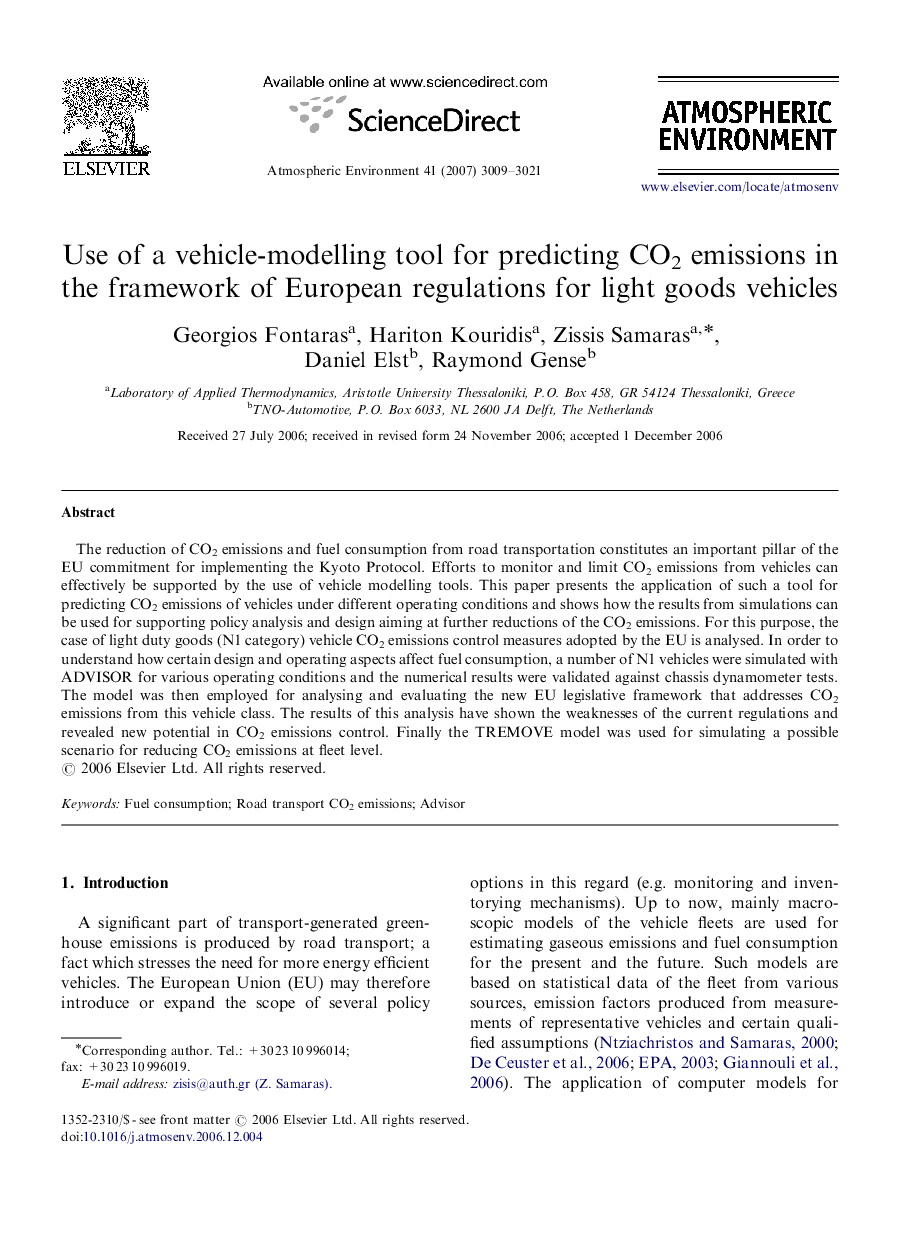| Article ID | Journal | Published Year | Pages | File Type |
|---|---|---|---|---|
| 4443342 | Atmospheric Environment | 2007 | 13 Pages |
The reduction of CO2 emissions and fuel consumption from road transportation constitutes an important pillar of the EU commitment for implementing the Kyoto Protocol. Efforts to monitor and limit CO2 emissions from vehicles can effectively be supported by the use of vehicle modelling tools. This paper presents the application of such a tool for predicting CO2 emissions of vehicles under different operating conditions and shows how the results from simulations can be used for supporting policy analysis and design aiming at further reductions of the CO2 emissions. For this purpose, the case of light duty goods (N1 category) vehicle CO2 emissions control measures adopted by the EU is analysed. In order to understand how certain design and operating aspects affect fuel consumption, a number of N1 vehicles were simulated with ADVISOR for various operating conditions and the numerical results were validated against chassis dynamometer tests. The model was then employed for analysing and evaluating the new EU legislative framework that addresses CO2 emissions from this vehicle class. The results of this analysis have shown the weaknesses of the current regulations and revealed new potential in CO2 emissions control. Finally the TREMOVE model was used for simulating a possible scenario for reducing CO2 emissions at fleet level.
